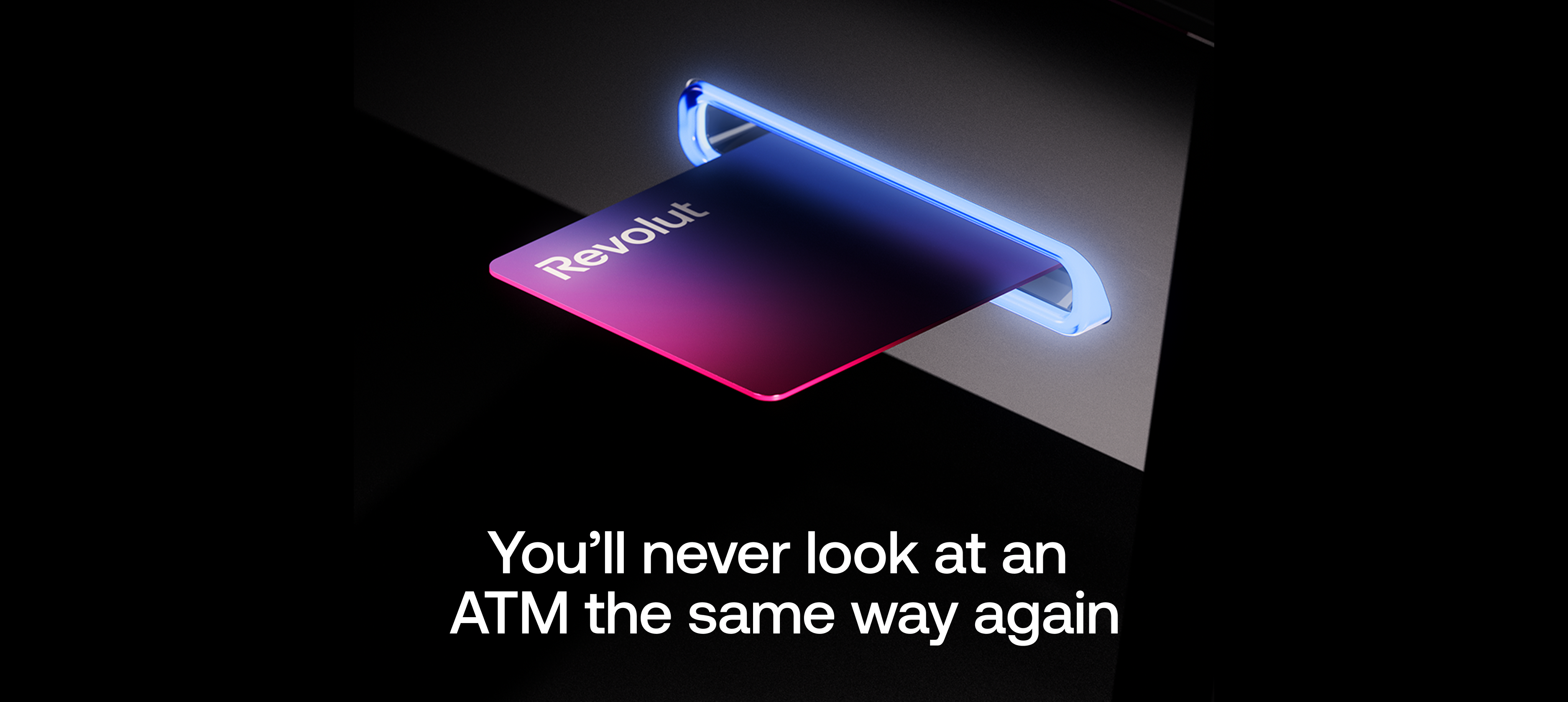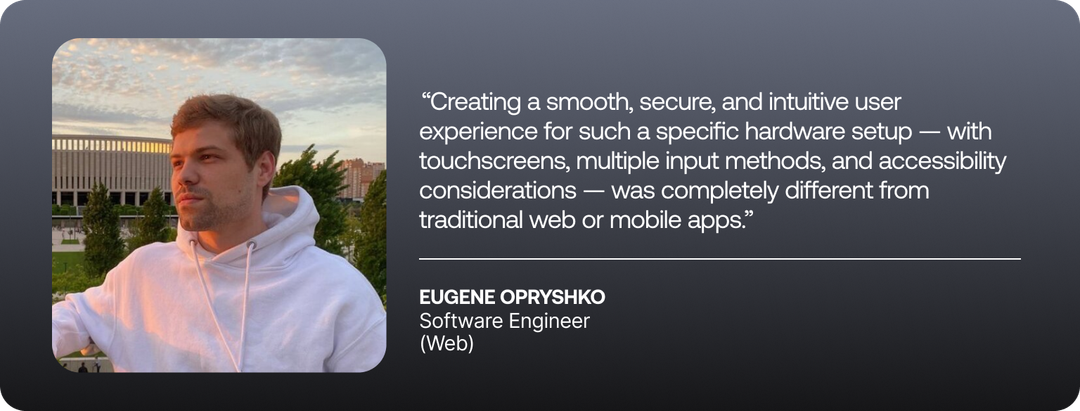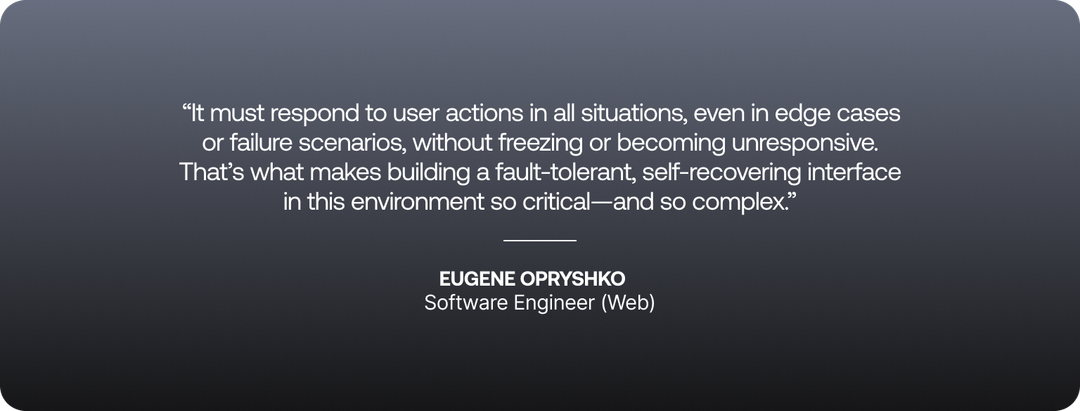
ATMs: Inside the tech that's changing finance
People · 22 August 2025Nicolás Vásquez
When we say we're building the future of finance, it's because we're genuinely pushing boundaries and always going further. This time, we're bringing what’s online into the real world. With the arrival of our ATMs¹, we're not just deploying another everyday object, we're bringing an entire experience to life. These new touchpoints transform and simplify "all things money," making financial access more seamless, agile, and intuitive than ever before.
But bringing this vision to life takes more than ambition. It requires innovation, engineering, design, and creativity behind every ATM. That’s why we’re giving you a behind-the-scenes look at the technology that makes it all possible. As Andrey Lyubimov, our ATM Product Owner, puts it:

The cardless access challenge
Our move to physical ATMs came with a major challenge: cardless access, using just your Revolut app. Making QR scanning and in-app approval work on ATM hardware — in real-time and securely — was a significant engineering feat.
To make this possible, our team had to adapt web-based Single Sign-On (SSO) technology to run on hardware-constrained ATMs. They tackled complex challenges like short-lived session management, secure app linking, and handling all those edge cases, including timeouts, cancellations, and fallback scenarios.
As Eugene Opryshko, explains:

But it didn’t stop there. Unlike a mobile or web, an ATM interface must be completely self-sufficient — there’s no refreshing the page or restarting the app.

The result is a faster, more secure way to access your money — without relying only on a physical card.
The back-end challenge:
While the user interface is the most visible part of the ATM experience, much of the complexity happens behind the scenes. Making all the parts work together seamlessly was a significant hurdle that Andrei and his team overcame.

One key piece was designing a robust card-dispense logic that could coordinate hardware-level commands with strict transactional checks — without compromising speed or safety.
Ensuring real-time responsiveness and fault tolerance in such a critical environment is both challenging and rewarding.

Modern tech meets legacy hardware
Our journey to reinvent the ATM involved bridging the gap between cutting-edge cloud architecture and decades-old banking hardware. It's forward-thinking software integration.
As Andrey Lyubimov explains:

That meant working around proprietary software, vendor-specific constraints, and strict security protocols — all of which make real-time monitoring and remote updates significantly more complex than in standard cloud environments. It’s like navigating a maze built by different architects over several decades.
To solve this, we decoupled the ATM’s core logic and moved critical components to our cloud infrastructure. This enabled us to ship updates and features quickly, without being held back by traditional vendor release cycles. Think of it as giving an old car a brand-new, cloud-powered engine.
Beyond the limitations
Of course, this approach brings its own challenges. For Andrei, debugging issues across multiple vendor systems — each with different logging formats and visibility — often felt like “piecing together a distributed system without shared observability.”
But these are the kinds of technical puzzles that fuel our innovation. Our focus isn’t on limits — it’s on unlocking new possibilities.
If you're passionate about redefining how people interact with money and want to help build the future of finance at the infrastructure level, we want to hear from you.
¹ Revolut ATM availability differs by region and may not be offered in all markets